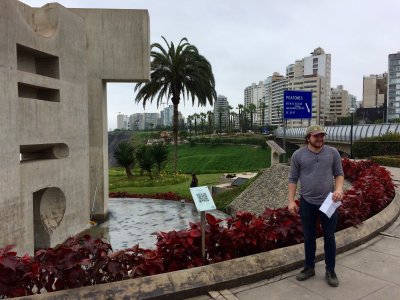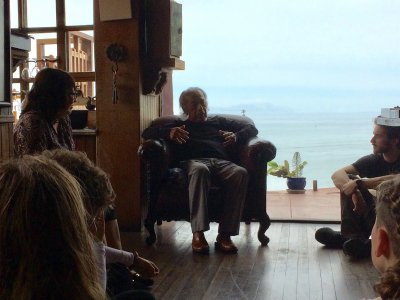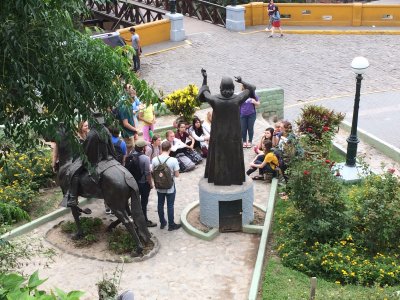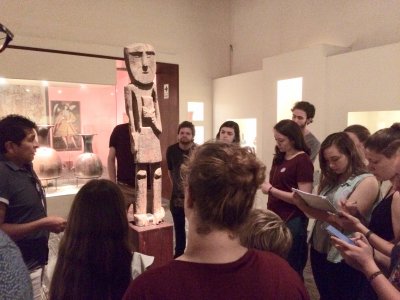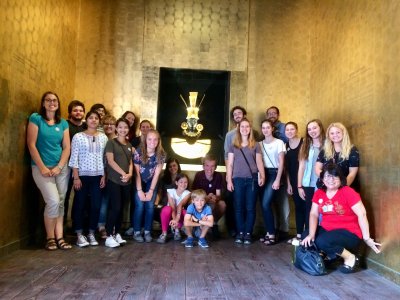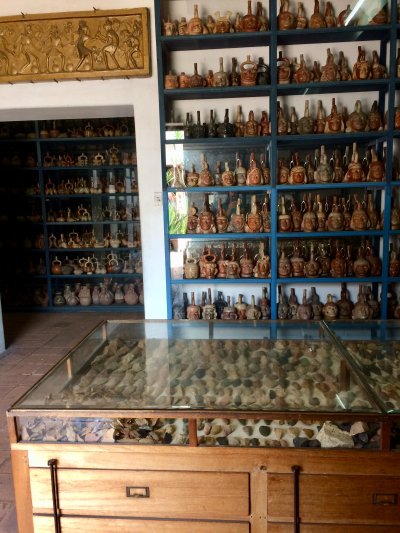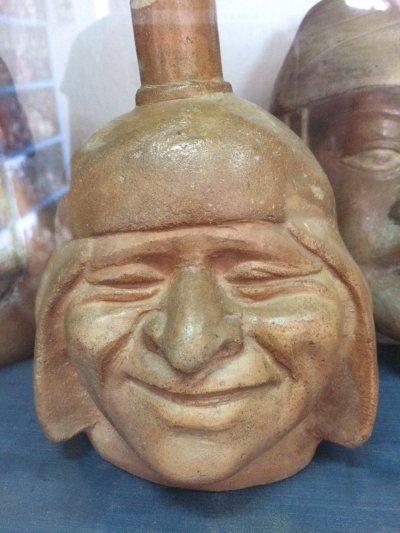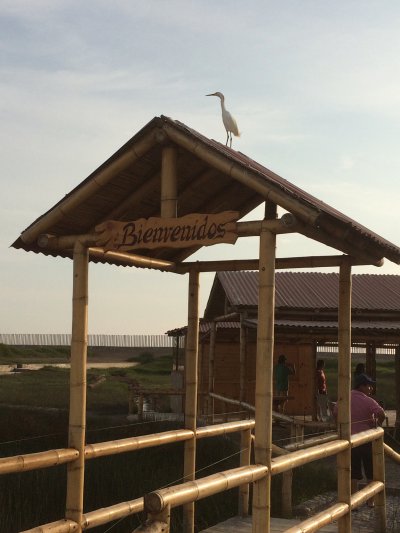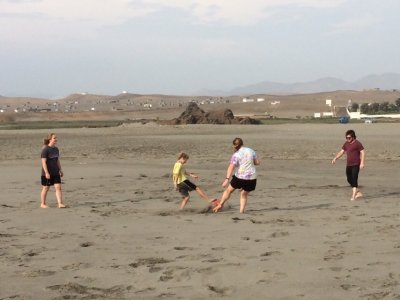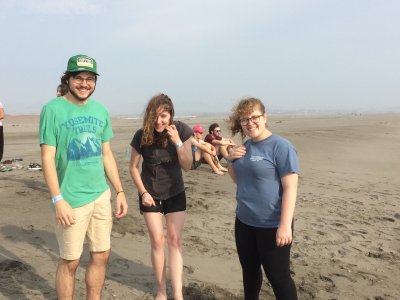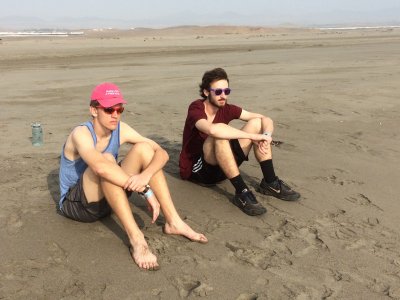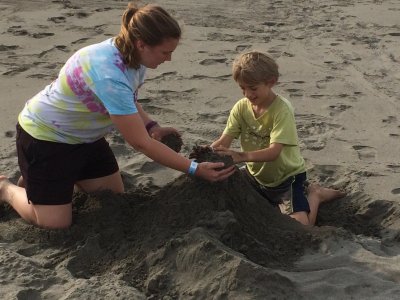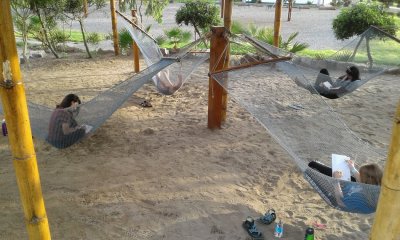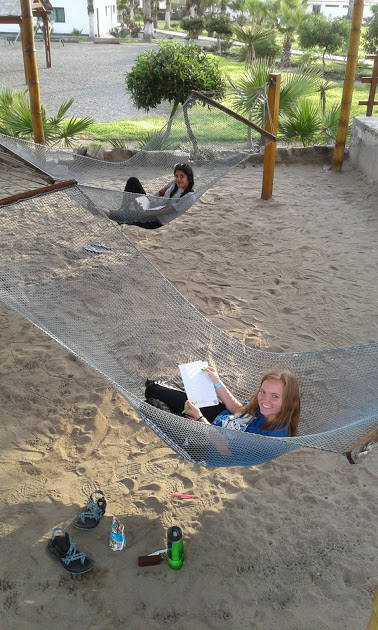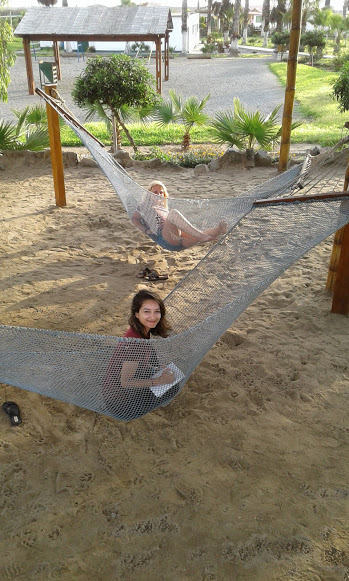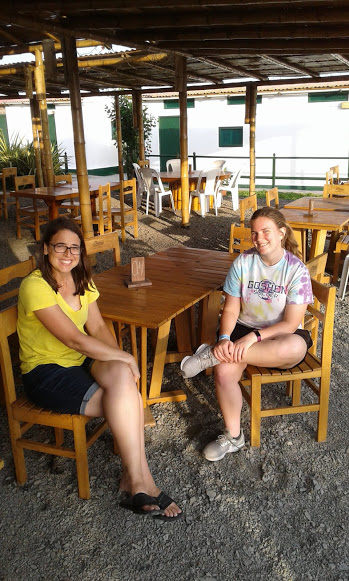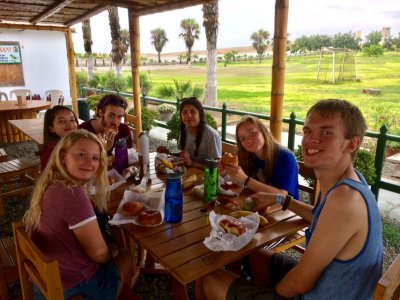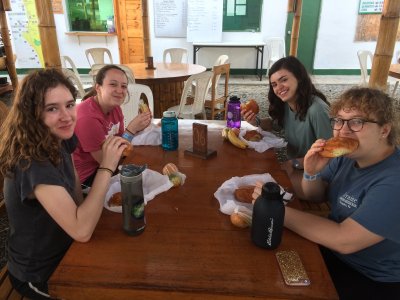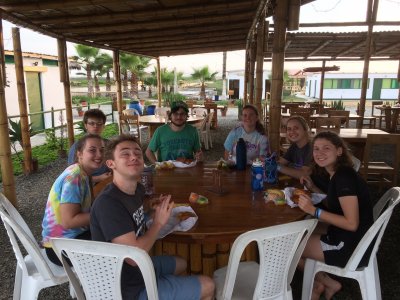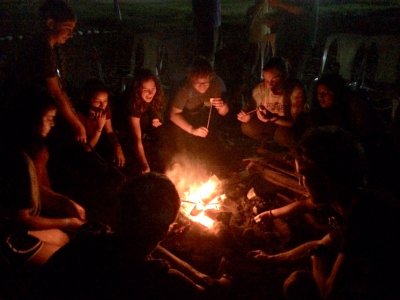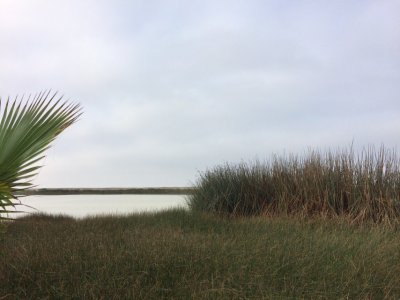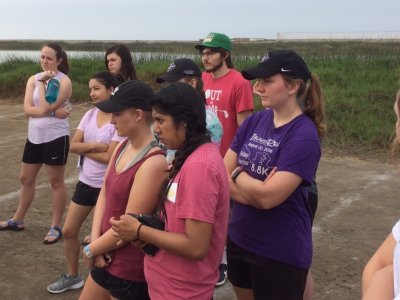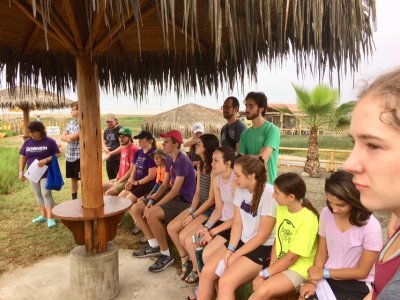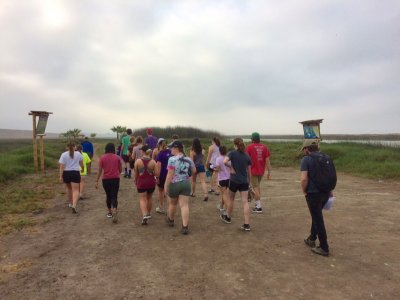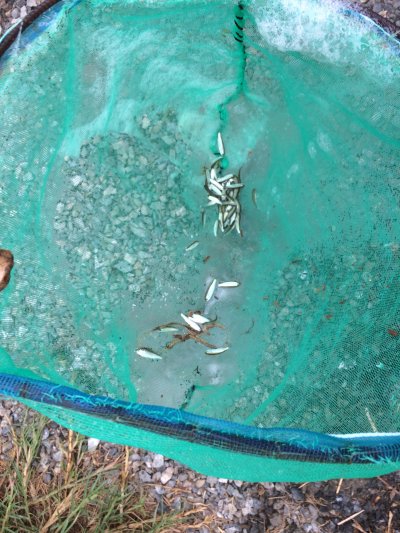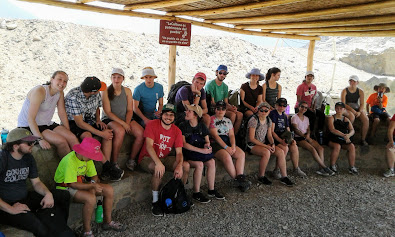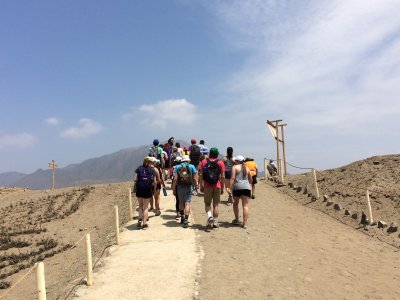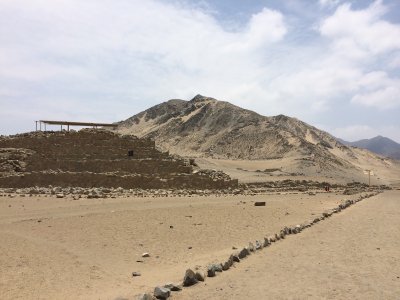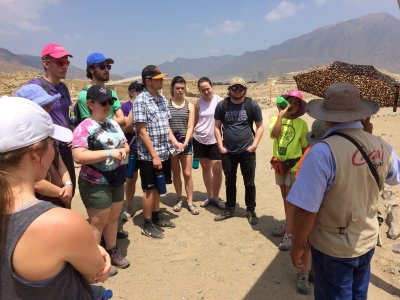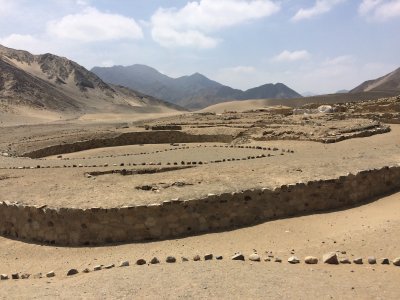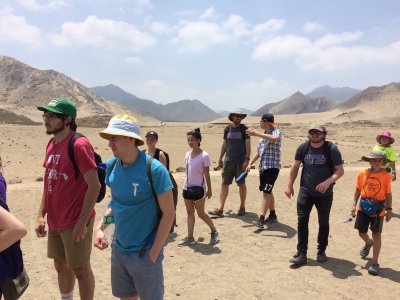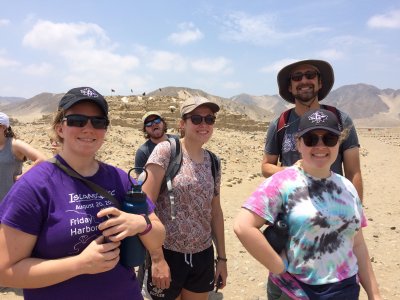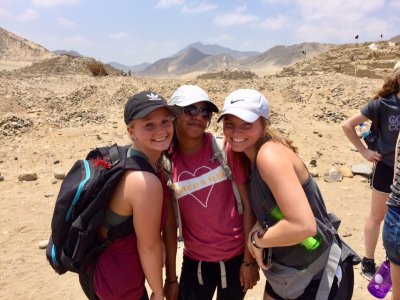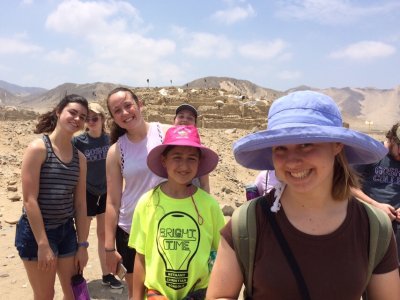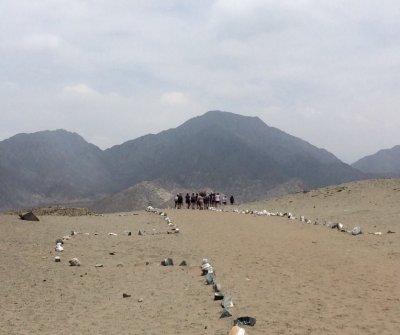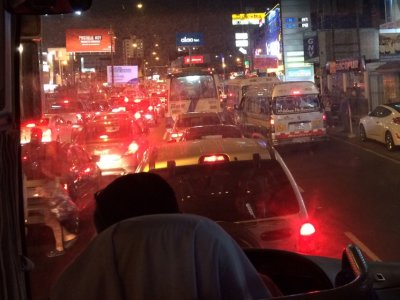Week Two: Modern-day Art and Ancient Civilizations

This week, we enjoyed lots of time outside the classroom. On Monday, we spent the morning in the district of Barranco, where we visited the home of Peruvian artist, Victor Delfin. At different points in the morning, we also stopped to hear the first four student speeches in our Authors, Artists, and Activists series. On Tuesday, we visited, Museo Larco, a private museum featuring a large collection of ceramics, metalwork, textiles and other art from before the Spanish conquest. Through this collection, we learned about the indigenous societies that populated Perú for thousands of years before the Incas, such as the Chimú, Nazca, Moche and Wari. The museum itself is housed in a 17th-century mansion build on top of a 7th century pyramid.
On Thursday we had our first opportunity to leave the city of Lima for an overnight field trip. We boarded our bus for a 5-hour trip north on the Pan-American highway to visit Albufera del Medio Mundo, a protected wetland, and the sacred city of Caral, an ancient archaeological site.
On our way out of the city, we passed miles and miles of pueblos jovenes (shanty towns) built into the hills, many of which have developed into districts with increasing infrastructure. After two hours, we finally arrived at the end of what is considered metropolitan Lima, and the heavily populated areas gave way to miles and miles of barren sand dunes. Gigantic chicken farms periodically appeared out of nowhere, as well as an occasional lush, green agricultural area where rivers coming down from the mountains allow for irrigation in the desert. We stopped in one of these areas, the town of Chancay, about halfway to our destination. We ate lunch at the home of Hortensia and Juan Carlos Dulanto, who have served as a host family for past GC students during the service portion of SST, and are the host grandparents of current SST student, Erin.
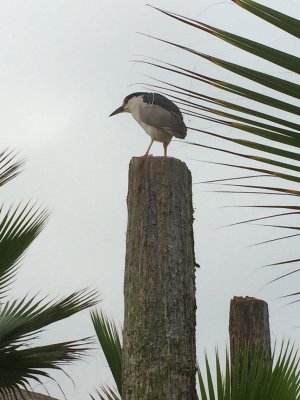
After another two hours of driving, we arrived at Albufera del Medio Mundo. Our lodging for the night was a set of cottages beside the albufera, a lagoon that has a mix of both salty and fresh water, and is the central feature of this biodiverse wetland which hosts 8 different habitats. Students had some time to walk the paths around the albufera, visit the ocean, relax, and play frisbee. After a picnic supper, we built a fire and spent some time singing camp songs and reflecting on our experiences thus far in Perú. Afterwards, we enjoyed some improvised S’mores.
On Friday, we got up early for a bird walk with one of the resident environmentalists, and learned more about the local ecosystem. The albufera has 41 species of resident birds, and hosts 22 migratory birds, as well as 3 birds from the high Andes. We saw many of these birds, both large and small, on our walk along the lagoon.
Following our walk, we had a quick breakfast and were off to our next destination – the Sacred City of Caral. Caral is the oldest center of civilization in the Americas. Carbon dating of objects found at the site put its development sometime between 3000-1800 B.C., which means it was a thriving society at roughly the same time the Egyptian pyramids were being built. Caral is 14 miles inland from the coast and is situated on a desert terrace, looking over the green Supe River valley. This site has only recently begun to be studied in depth, so the surrounding natural area is still quite undeveloped. Six large pyramidal structures, large communal sites such as an amphitheater, and remnants of personal dwellings make up the site.
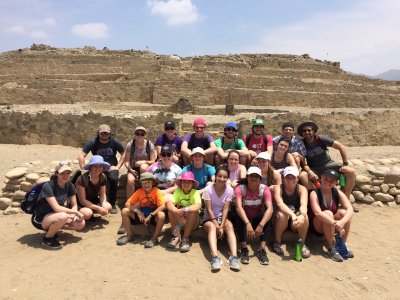
After bring dropped off by the bus, we needed to hike an additional 30 minutes to arrive at the site. It was a hot and very sunny day and we were thankful for our hats, sunscreen and water. Once there, our tour guide walked us across the site, giving us a closer view of the main structures of the Caral complex. The hike around the site also gave us great views of the surrounding hills and green river valley, which is still an active agricultural area, growing watermelon, passion fruit, avocado and corn. Despite the heat, it was nice to be in a wide-open space after several weeks in Lima.
On the bus ride home, students had time to chat, process, and take a well-deserved nap. It has been an exciting and full first two weeks, and we are looking forward to more field trips, both inside and outside of Lima, next week.
